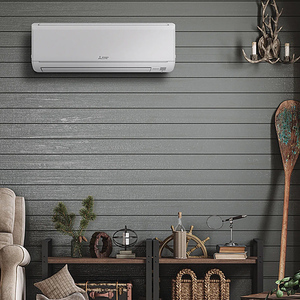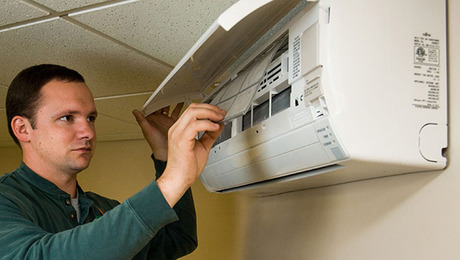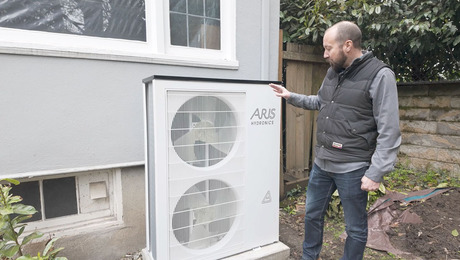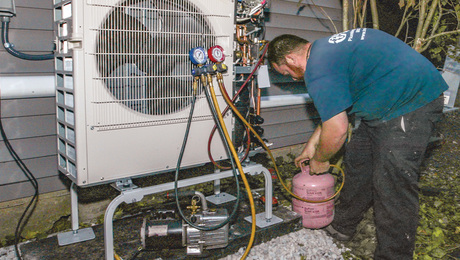Controlling Mold in Minisplits
Humidity problems or leaks can be caused by clogged drain pans, broken condensate lines, or out-of-level units. But if mold issues persist, dehumidification is key.
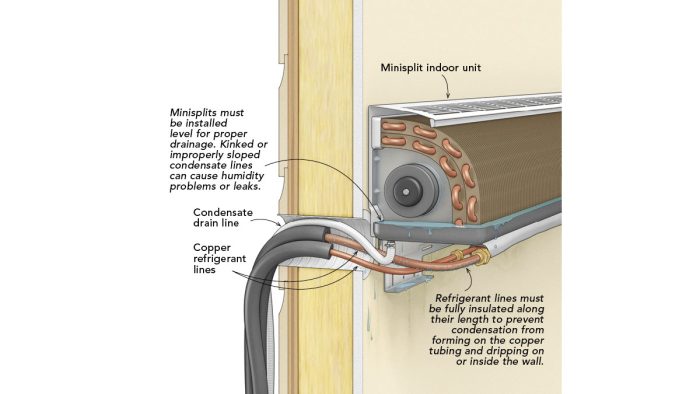
Could one of your experts share some advice on how to deal with mold in mini-splits? I had a Mitsubishi multi-split system installed about seven years ago. Mold builds up on the filters to some degree and even more within the units, despite having them cleaned annually, sometimes twice a year.
We recently had mold testing as part of caring for an immunocompromised family member and found that we had a lot of mold in the rooms with a minisplit unit. A local HVAC contractor who specializes in minisplits told us that mold builds up in all minisplit systems. Is that the case?
There does seem to be a leak in one condensate line (based on water marks just below it and at the bottom of the wall by the trim), though I haven’t opened up the cavity yet to find out. But even if this one is leaking, it seems unlikely that this is the source of the mold in all the units.
— Elizabeth Thompson; Takoma Park, Md.
HVAC Expert Jon Harrod Replies
The first thing I’d look at is the cause of the water damage. The indoor unit may be out of level, the piping may be clogged or poorly sloped, or the hose connections may be loose. I’ve also seen leaks when mice chewed through the tubing. To test condensate drainage, I remove the filter and slowly pour a liter of distilled water onto the indoor coil.
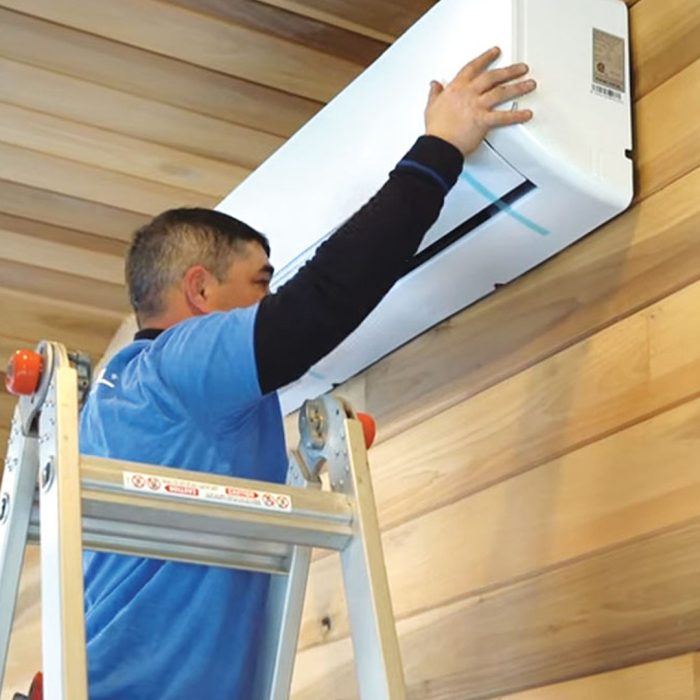
The water should flow freely from the drain pipe without dripping elsewhere. It’s also possible that the refrigerant tubing or condensate drain pipe is missing insulation, either inside the head or in the wall penetration to the exterior wall. If indoor air comes into contact with the cold tubing, condensation and dripping can occur.
Once any leaks are resolved, I’d run the system and check the humidity in the space with a temperature/humidity meter. Minisplits do tend to have limited dehumidification capabilities. In cooling mode, they move a lot of air over a moderately cool evaporator coil, maximizing efficiency at the expense of moisture removal.
More to Consider
Multi-zone ductless systems have another challenge; their modulation range (their ability to ramp up and down in response to cooling demand) is less than that of single-zone systems. They tend to turn on and off more, especially in mild weather. The shorter run cycles mean that more moisture ends up stranded on the indoor coil and evaporates back into the air instead of draining.
Ductless heads, both single- and multi-zone, have a “dry” mode, which slows the fan speed and makes the coil colder, allowing the system to remove more water while cooling the air less. If the system can’t maintain 50% relative humidity (RH) when operating in dry mode, you may need to install a dehumidifier.
A dehumidifier will also control humidity during the spring and fall when no cooling is needed. Sealing air leaks and encapsulating damp crawlspaces can reduce the amount of moisture the mechanical equipment needs to remove.
Reducing indoor humidity to the 50% range will likely reduce mold and algae buildup. If regular filter maintenance and annual or semi-annual cleaning don’t bring this growth down to acceptable levels, consider a nontoxic pan treatment like Nu-Calgon’s PurCool Green Mini Strips.
RELATED STORIES
Need help?
Need help with figuring out how to clean a mini split or another similar problem? Get answers you can trust from the experienced pros at FHB. Email your question to Experts@FineHomebuilding.com.






